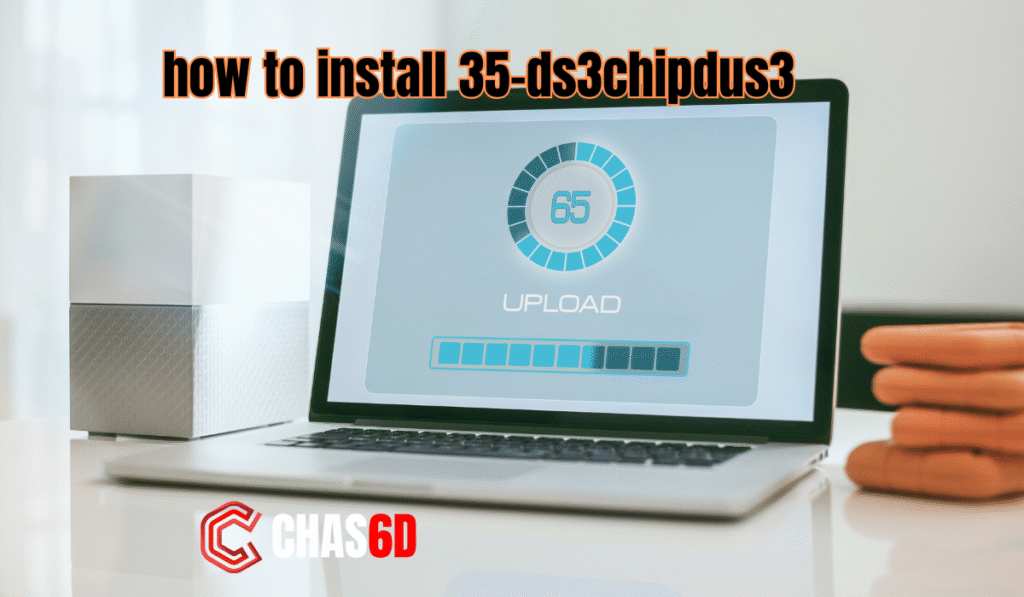In today’s tech-driven world, devices continue to evolve rapidly, and so does the need for adaptable chipsets and components. One such hardware that has made a significant impact across several industries—especially in embedded systems, robotics, and firmware testing—is the 35-ds3chipdus3.
In this definitive guide, we will cover how to install 35-ds3chipdus3 from start to finish, along with everything else you need to ensure smooth operation. Whether you’re a developer, tech hobbyist, or hardware engineer, this guide is tailored to make your installation experience seamless and optimized.
What Is the 35-ds3chipdus3?
Before jumping into the installation process, let’s first understand what exactly we’re dealing with.
The 35-ds3chipdus3 is a highly integrated microchip module primarily used in advanced microcontroller projects. It’s designed for digital system management, signal processing, and custom firmware deployment in environments where reliability and compact hardware are critical. Its small form factor, high I/O compatibility, and ultra-low power consumption make it ideal for embedded systems.
The device typically includes:
- A 32-bit ARM Cortex-based processor
- SPI/I2C/UART interfaces
- EEPROM support
- Voltage regulation features
- Enhanced GPIO expandability
While not mainstream like Raspberry Pi or Arduino boards, the 35-ds3chipdus3 has a loyal following among industrial IoT engineers and cybersecurity professionals.
Why the 35-ds3chipdus3 Stands Out
Before we dive into how to install 35-ds3chipdus3, it’s worth examining why this chip is increasingly becoming a popular choice.
Proprietary Efficiency Architecture
The chip operates on a highly efficient dual-signal processing architecture. This allows developers to run asynchronous operations without overclocking the CPU, reducing thermal output and energy costs.
Security-First Configuration
It includes integrated support for:
- Secure Boot
- AES-256 encryption modules
- Tamper detection
These features make it ideal for financial hardware systems, access control devices, and military-grade communication systems.
Plug-and-Code Flexibility
What makes installation exciting is the chip’s plug-and-code ability. While it might sound simple, there’s a specific structure to follow—which brings us to the main event.
How to Install 35-ds3chipdus3: Step-by-Step Process
The installation process includes several key phases:
- Hardware Preparation
- Software Dependencies
- Initial Testing
- Firmware Configuration
- Deployment
Let’s break them down.
Phase 1: Hardware Preparation

Gather Required Tools
Before starting the process of how to install 35-ds3chipdus3, make sure you have the following:
- 35-ds3chipdus3 unit (genuine, from verified supplier)
- Soldering iron with flux
- 3.3V/5V adjustable power supply
- Serial USB-to-TTL converter
- Jumper wires
- Anti-static gloves and mat
- Breadboard or custom PCB (depending on setup)
Environmental Safety Check
Always ensure you’re working in an ESD-safe environment. Electrostatic discharge is a silent killer of sensitive microchips.
- Use a grounded wrist strap
- Handle the chip by the edges
- Avoid working on carpeted floors
Wiring Diagram Overview
Here’s a basic pin configuration for the 35-ds3chipdus3:
| Pin | Function | Description |
|---|---|---|
| 1 | VCC | Power input (3.3V/5V) |
| 2 | GND | Ground |
| 3 | TX | Transmit (UART) |
| 4 | RX | Receive (UART) |
| 5 | SDA | I2C Data |
| 6 | SCL | I2C Clock |
| 7 | GPIO 1-8 | General Purpose I/O |
Make sure to cross-reference the official datasheet for your version of the chip.
Phase 2: Software Dependencies
Now that the chip is ready, the next step in how to install 35-ds3chipdus3 involves preparing your development environment.
Operating System
The most commonly supported OSs include:
- Windows 10/11
- Ubuntu 20.04+ LTS
- MacOS Monterey and later
Required Software
Install the following packages:
1. Driver for USB-to-TTL
- Windows: Use the CP210x or CH340 driver (depending on your adapter)
- Linux/MacOS: Most distros include this out of the box
2. IDE or Command-line Toolchain
- Visual Studio Code with PlatformIO
- Arduino IDE (with custom board support)
- STM32CubeIDE (for ARM-based extensions)
- Custom SDK (downloadable from vendor site)
3. Chip Flasher Tool
The chip works best with the DSFlashUtility v3.5+, a cross-platform flasher provided by the manufacturer.
Phase 3: Initial Testing
Once the setup is done, you’re ready to test the connection.
Step-by-Step Initial Test
- Connect TX → RX, RX → TX, VCC → Power Source, GND → Ground.
- Open terminal using PuTTY, CoolTerm, or
screen(Linux). - Set baud rate to 115200.
- Power on the chip.
- You should see a boot message:
>> 35-ds3chipdus3 Bootloader v3.5 initialized.
If not:
- Double-check your wiring
- Ensure jumper wires are firmly connected
- Reflash drivers
Phase 4: Flashing the Firmware
This is a crucial stage in how to install 35-ds3chipdus3.
Selecting the Right Firmware
Depending on your project, choose between:
- Real-time OS (RTOS) builds
- Bare-metal firmware
- Custom Linux kernel (minimal)
Flashing Commands
Using DSFlashUtility:
bashCopyEditdsflash --port COM3 --chip ds3chipdus3 --baud 115200 --write firmware.hex
If flashing is successful, you’ll see:[Success] Firmware written and verified.
Some users prefer using avrdude or openocd, depending on their existing toolchain.
Phase 5: Post-Installation Configuration
Now that you know how to install 35-ds3chipdus3, let’s configure it for operational use.
GPIO Mapping
Edit the gpio.conf file included in your firmware package.
Example:
bashCopyEditGPIO1=LED_STATUS
GPIO2=BUTTON_INPUT
Security Features
Enable secure boot and encryption:
bashCopyEditdsconfig --secure-boot enable
dsconfig --aes-key gen
Test I/O Response
Run a test using serial monitor:
bashCopyEditping 192.168.0.55
Expect a return ping with timestamp and voltage info.
Pro Tips for Optimal Performance
Avoid Overloading GPIO
The 35-ds3chipdus3 is sturdy but overloading its GPIOs can reduce its lifespan. Always buffer heavy-duty inputs and outputs.
Keep Firmware Updated
The manufacturer occasionally releases patches for firmware vulnerabilities. Subscribe to their update newsletter or GitHub repo.
Leverage Debug Ports
Use the onboard JTAG pins for deep-level debugging. This is extremely useful when building critical infrastructure.
Common Mistakes to Avoid
1. Incorrect Voltage Supply: Always confirm the chip’s voltage input range.
2. Skipping Grounding Precautions: One static discharge can fry the entire unit.
3. Misaligned Firmware: Make sure the firmware build is specifically compiled for ds3chipdus3 and not another variant.
4. Ignoring Clock Sync: If you’re using multiple chips, synchronize their system clocks using an external oscillator.
Real-World Applications
While you’re now confident about how to install 35-ds3chipdus3, you might be wondering where it’s typically used.

Industrial Automation
In programmable logic controllers (PLCs), the chip serves as a mini-processor for remote I/O units.
Robotics
Used in servo-motor control boards and sensor fusion systems, thanks to its high I/O performance.
Cybersecurity Devices
It’s used to create encrypted USB dongles and hardware-based OTP generators.
Smart Infrastructure
Ideal for building management systems (BMS), such as HVAC controllers and smart lighting interfaces.
Final Thoughts
Installing the 35-ds3chipdus3 might seem daunting at first, but by following this guide step by step, it becomes a highly rewarding process. From the initial hardware setup to post-installation configuration, this chip offers both performance and flexibility that few alternatives can match.
Whether you’re integrating it into a professional project or using it for experimental prototyping, knowing how to install 35-ds3chipdus3 properly sets the foundation for success.
If you’re planning to scale your project, consider building a modular system around the chip to make maintenance and upgrades easier in the future.
FAQs
Q: Can I use the 35-ds3chipdus3 with Arduino libraries?
Yes, but you may need to create custom wrapper functions or use PlatformIO with ARM support.
Q: Does it support wireless communication?
Natively no, but it can be paired with modules like the ESP32 or LoRa chips via SPI/UART.
Q: Is it safe for outdoor use?
Only when encased in weatherproof housing and used within its thermal limits.


